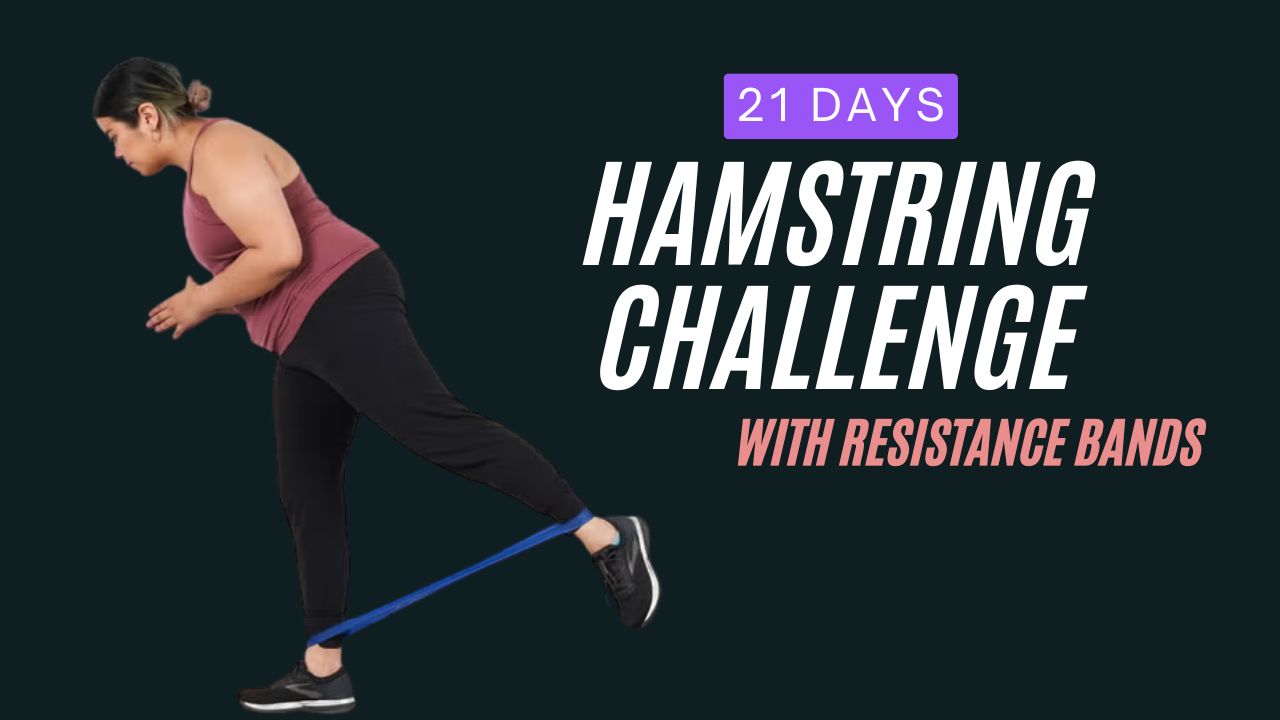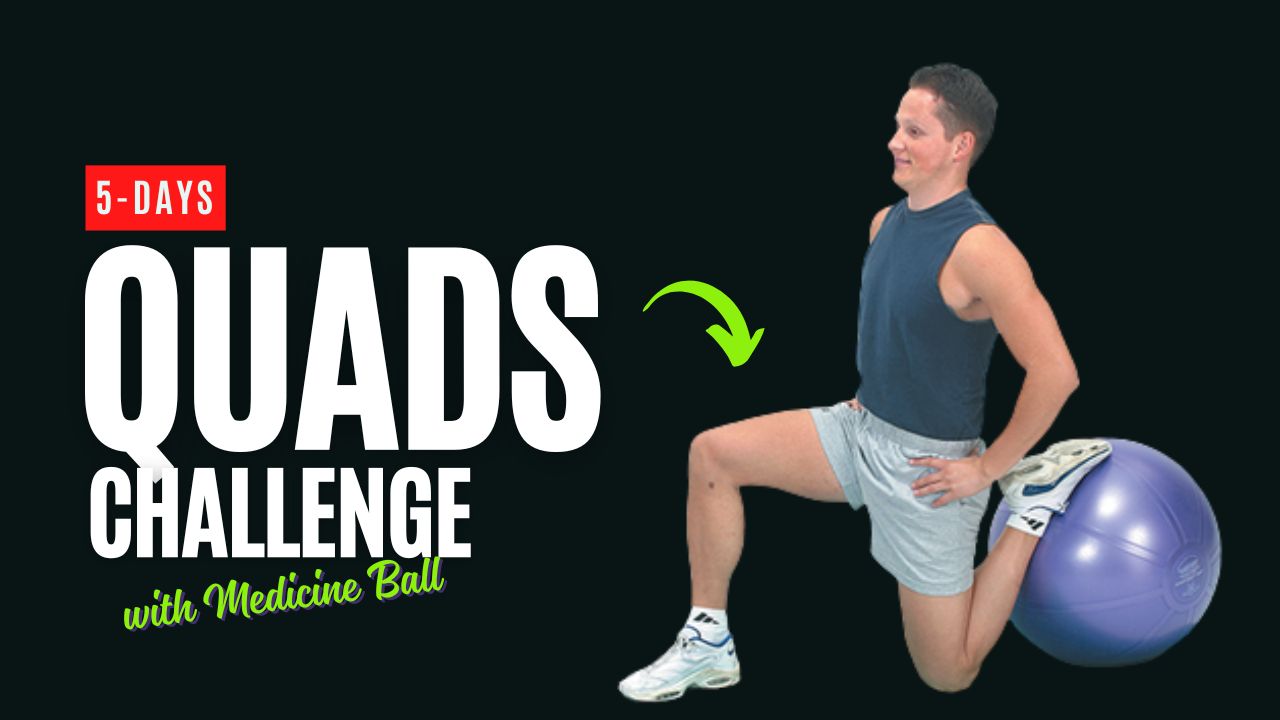When it comes to athletic performance, strong hamstrings are often the unsung heroes of speed, power, and injury prevention. Most athletes focus heavily on quads, glutes, or calves, but hamstrings play a pivotal role in sprinting, jumping, and overall lower-body stability.
Did you know that hamstring injuries are among the most common in sports like soccer, football, and track? The right strength program not only boosts performance but also reduces the risk of strains.
Welcome to the 5-Day Cable Hamstring Challenge, a progressive, equipment-focused routine designed to target hamstrings from multiple angles using the cable machine.
Whether you are an athlete or simply want to enhance lower-body strength, this program ensures maximal hamstring engagement while maintaining joint safety.

Table of Contents
Why Cables Are Perfect for Hamstring Training
Cables provide constant tension throughout the movement, unlike free weights, which may lose resistance at certain angles.
This makes them ideal for targeting the hamstrings through a full range of motion. Additionally, cables allow for controlled movements, which is excellent for preventing common injuries.
Fun fact: Many elite athletes integrate cable exercises into their hamstring routines because cables can mimic sport-specific movements, improving both power and flexibility simultaneously.
What Can Happen After 30 Days of the 5-Day Cable Hamstring Challenge
| Benefit Category | Expected Outcome |
|---|---|
| Strength | Noticeable increase in hamstring and posterior chain strength. |
| Endurance | Improved muscular endurance, allowing longer, more intense workouts. |
| Flexibility | Enhanced hamstring flexibility and joint mobility. |
| Athletic Performance | Better sprinting, jumping, and overall lower-body power. |
| Muscle Tone | Visible definition and improved muscle symmetry in hamstrings and glutes. |
| Injury Prevention | Reduced risk of hamstring strains and lower-body injuries. |
| Balance & Stability | Improved single-leg stability and coordination. |
| Recovery | Faster recovery after lower-body workouts due to stronger hamstrings and glutes. |
Do’s and Don’ts for the 5-Day Cable Hamstring Challenge
| Do’s | Don’ts |
|---|---|
| Warm up properly before each session to prepare your hamstrings and joints. | Skip the warm-up or cool-down, which increases the risk of injury. |
| Maintain a neutral spine and proper posture during all exercises. | Arch your back or use momentum to lift weights. |
| Focus on controlled, slow movements to maximize hamstring engagement. | Perform exercises too quickly or jerk the cable, reducing effectiveness. |
| Gradually increase resistance as your strength improves. | Overload the cables too early, risking strain or injury. |
| Use single-leg variations to correct imbalances. | Ignore muscle imbalances or favor one leg over the other. |
| Include stretching and mobility work after workouts. | Neglect flexibility work, which can limit range of motion and performance. |
| Stay consistent with the 5-day routine and allow recovery. | Skip sessions or perform exercises sporadically. |
| Listen to your body and rest if experiencing pain or discomfort. | Train through sharp pain or hamstring injuries without proper rest. |
Cable Exercises For The Hamstring Challenge
Exercise 1: Lying Cable Hamstring Curl
Description: The lying hamstring curl on a cable machine isolates the hamstrings, helping build both strength and endurance. It emphasizes the eccentric phase, which is crucial for reducing hamstring strains.
How to:
- Attach an ankle strap to a low cable pulley and fasten it around one ankle.
- Lie face down on a bench, with your ankle positioned behind the bench.
- Keep your hips pressed against the bench and slowly curl your heel toward your glutes.
- Pause at the top for 1–2 seconds, squeezing the hamstring.
- Lower your leg slowly, maintaining tension throughout the motion.
Tip: Avoid arching your back; the movement should come purely from your hamstrings.
Exercise 2: Standing Cable Hamstring Curl
Description: This variation allows for a functional hamstring contraction, closely mimicking the action during running. It also engages stabilizers, enhancing knee and hip stability.
How to:
- Attach an ankle strap to a low cable and stand facing the machine.
- Keep your supporting leg slightly bent and core engaged.
- Curl your working leg backward, bringing your heel toward your glutes.
- Slowly return to the starting position under control.
- Repeat for the desired reps, then switch legs.
Interesting fact: Standing hamstring curls recruit both the long head and short head of the hamstring, improving sprinting efficiency.
Exercise 3: Cable Romanian Deadlift
Description: The Cable Romanian Deadlift (RDL) targets the hamstrings and glutes while emphasizing hip hinge mechanics. It is excellent for building posterior chain strength without placing excessive load on the lower back.
How to:
- Attach a straight bar to a low cable pulley and hold it with both hands.
- Stand with feet hip-width apart and a slight bend in the knees.
- Hinge at the hips, pushing your glutes back, and lower the bar toward your shins.
- Keep your chest up and back neutral throughout the movement.
- Engage your hamstrings to return to standing, squeezing your glutes at the top.
Myth busted: Many believe RDLs are only for the glutes. In reality, hamstrings are heavily involved, particularly during the eccentric phase.
Exercise 4: Cable Glute-Ham Raise
Description: This hybrid move combines a hamstring curl and glute engagement, targeting the posterior chain dynamically. It is highly effective for athletes looking to improve sprint speed and jump height.
How to:
- Secure your feet under the lower cable attachment using an ankle strap.
- Kneel on a padded surface, keeping your torso upright.
- Slowly lower your upper body toward the floor while maintaining a straight line from knees to head.
- Use your hamstrings and glutes to pull yourself back to the starting position.
- Perform controlled reps to maximize tension and avoid injury.
Pro Tip: Focus on slow eccentrics, as lowering slowly enhances hamstring lengthening and strength.
Exercise 5: Single-Leg Cable Kickback
Description: Single-leg kickbacks isolate each hamstring individually, which helps correct imbalances and improve symmetry between legs.
How to:
- Attach an ankle strap to a low cable pulley.
- Stand facing the machine with a slight forward lean and a soft bend in your knees.
- Extend your leg backward, keeping the knee slightly bent, squeezing your hamstring and glute at full extension.
- Slowly return to the starting position and repeat.
- Switch legs after completing the set.
Did you know? Training single-leg movements can enhance balance, coordination, and athletic performance more than bilateral exercises alone.
Exercise 6: Cable Dead Stop Hamstring Curl
Description: This variation introduces a pause at full extension, which maximizes hamstring activation and promotes endurance.
How to:
- Attach the ankle strap and lie face down on a bench.
- Curl your ankle toward your glutes and hold for 2–3 seconds at the top.
- Slowly lower back to the start, fully extending your leg while maintaining tension.
- Repeat for all reps, then switch legs.
Fact: Dead stop curls minimize momentum, ensuring the hamstring does all the work, which is highly effective for hypertrophy.
Exercise 7: Cable Pull-Through
Description: Pull-throughs are a functional hamstring exercise, ideal for athletes seeking explosive hip extension power.
How to:
- Stand facing away from a low cable with a rope attachment between your legs.
- Hinge at the hips, allowing the rope to pull your hands downward between your legs.
- Drive your hips forward explosively while squeezing your hamstrings and glutes.
- Slowly return to the starting position while maintaining a neutral spine.
Interesting fact: Pull-throughs mimic sprint mechanics, making them an excellent transfer exercise for running-based sports.
5-Day Cable Hamstring Challenge Routine
| Day | Exercises | Sets & Reps |
|---|---|---|
| 1 | Lying Cable Hamstring Curl Cable Romanian Deadlift Single-Leg Cable Kickback | 3×12-15 3×10-12 3×12 per leg |
| 2 | Standing Cable Hamstring Curl Cable Glute-Ham Raise Cable Pull-Through | 3×12-15 3×10-12 3×12-15 |
| 3 | Lying Cable Hamstring Curl (Dead Stop) Cable Romanian Deadlift Single-Leg Cable Kickback | 3×10-12 3×10-12 3×12 per leg |
| 4 | Standing Cable Hamstring Curl Cable Glute-Ham Raise Cable Pull-Through | 3×12-15 3×10-12 3×12-15 |
| 5 | Lying Cable Hamstring Curl Cable Romanian Deadlift Single-Leg Cable Kickback | 3×12-15 3×10-12 3×12 per leg |
Conclusion
Strong hamstrings are essential not only for athletic performance but also for overall lower-body stability, injury prevention, and improved mobility.
The 5-Day Cable Hamstring Challenge is designed to progressively strengthen your hamstrings through varied angles and controlled movements, ensuring balanced development and enhanced performance.
By following this challenge consistently, you will notice improvements in sprinting, jumping, and functional strength that translate to both sports and daily activities.
Challenge Continuation Ideas
Once you complete the 5-day challenge, you can continue progressing your hamstring strength by:
- Increasing resistance or cable weight gradually while maintaining proper form.
- Adding more advanced variations, such as single-leg Romanian deadlifts or eccentric-focused curls.
- Incorporating supersets by pairing hamstring exercises with glute or lower-back movements to enhance posterior chain engagement.
- Extending the routine to 6–8 weeks and alternating exercises to prevent adaptation and continuously challenge your muscles.
By following these continuation strategies, you can keep building hamstring strength, improve athletic performance, and reduce the risk of injury over the long term.
Frequently Asked Questions (FAQs)
Can beginners do this 5-day cable hamstring challenge?
Yes, beginners can follow this challenge by using lighter cable resistance and focusing on proper form. Gradually increase weight as your strength improves.
How long should each workout session take?
Each session typically takes 45–60 minutes, including warm-up and cool-down stretches.
Do I need a spotter for these cable exercises?
No, cable machines are safe to use alone since they provide controlled resistance. Ensure proper form to avoid injury.
How many times per week should I repeat this challenge?
This is a 5-day consecutive program, so repeat it once per week. Allow 1–2 rest days afterward for recovery.
Can this challenge help prevent hamstring injuries?
Yes, these exercises strengthen the hamstrings and improve flexibility, which helps reduce the risk of strains and tears.
Do I need other equipment besides a cable machine?
No, all exercises in this challenge are designed to be performed using a cable machine and an ankle strap attachment.
Can I combine this challenge with other leg workouts?
Yes, but avoid overtraining. Pairing it with glute, quad, or lower-back workouts on non-consecutive days is ideal.
How soon will I see results?
With consistent effort, improved strength, endurance, and hamstring definition can be noticed in 4–6 weeks.
Can women follow this challenge?
Absolutely! The program is suitable for both men and women, and adjustments can be made by modifying weight and reps.
Should I stretch before or after these exercises?
Always perform a dynamic warm-up before starting and static stretching after the session to improve flexibility and aid recovery.










